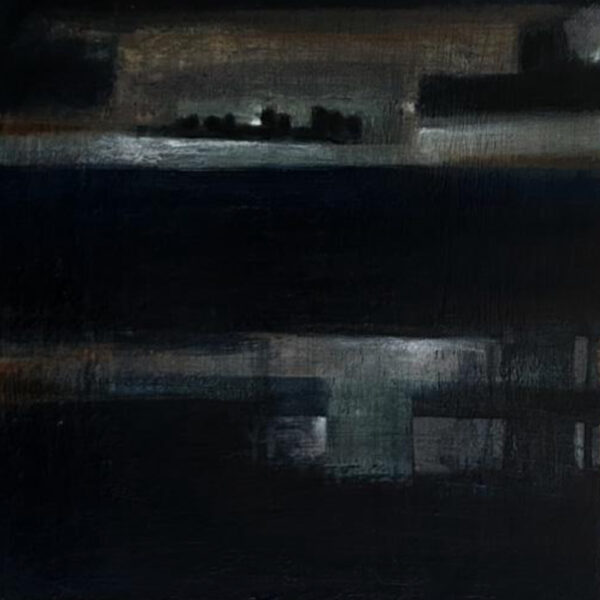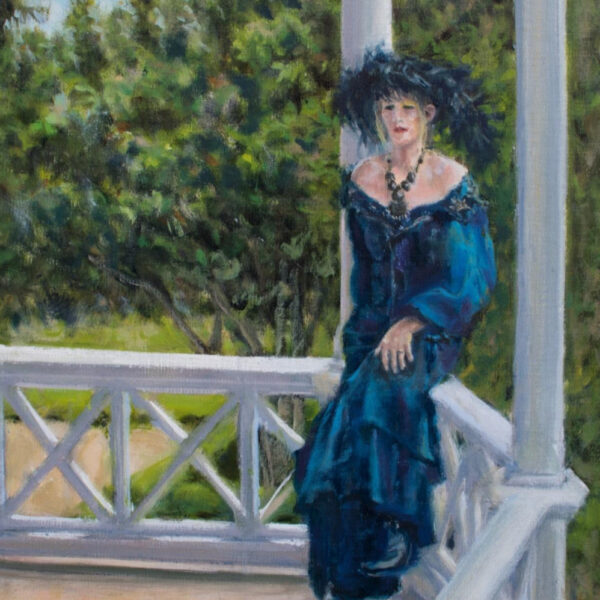Donna Arganbright – Wrapsody in Blue
$165.00
Initiator Artist: Donna Arganbright
Artwork Title: Wrapsody in Blue
Medium: Mixed Media
Price: $165
Responder Author: John Barry
Writing Title: Whapsody in Blue
Size: 11″x17″
Price: Donate to Favorite Charity
I’ll spin you a yarn, weave you a tale about the warp and weft of homophonic paronomasia (a playful Greek word). I won’t sing you an epic song, and I promise I won’t string you along for too long.
I’m thinking of Gershwin’s tune when I zoom in on the title’s runes, but only in passing while parsing. As I ruminate on the work, I view mostly cerulean and white filaments strung across a loom- or lyre-looking object with other filaments acting as string stalactites threading their way through the horizon. Similar filaments are wound ’round a garroted amorphous object having hues like those of its concave cousin—the two objects yoked by blue yarn in stringy symbiosis.
Above the work I perceive cunning punning: same sound, unorthodox orthography, silent consonant in a trifled-with title. Lexical legerdemain. A paronomastic morpheme. To make long story short: The amorphous object is wrapped in blue.
But might there be sub-rosa substance underlying the sapphiric (satiric?) title? The concept of sub rosa (“under the rose”) as a symbol of secrecy dates to Ancient Greece via stories of Harpocrates, the diety of silence. In a yarn that Harpocrates wove, Eros receives a rose from Aphrodite. He proffers it to Harpocrates to ensure that the silent sentinel is no tattle tale allowing the secrets of the gods to tumble, like Sisyphus’s boulder, noisily down from Olympus’s apogee. From the Middle Ages upward, rose statues, facades, and designs commonly adorned ceilings or guest rooms and, later, doorways of confessional booths. The symbolism, a reminder that any topics—such as sin—singled out within must remain secreted. Mum’s the word, although here, pun’s the word.
But, Greek mythology aside: Attic semantic actuality looms on the screen in the room where I Zoom, compliments of Etymology Online. In orthography’s Odeon, rhapsody derives from French rhapsodie, from Latin rhapsodia, from Greek rhapsōidia, “verse composition, recitation of epic poetry.” From rhapsōdos, “reciter of epic poems,” literally “one who stitches or strings songs together,” from the stem of rhaptein, “to stitch, sew, weave.”
In stitching a visual story together, did the artist slyly slide word origin under his neologistic title? Don’t know (I could say, “It’s all Greek to me”), but I’m enraptured by the metaphorical rap administered to my gray matter by the artist, one that led me down the road to rhapsodic realization, lexical learning, semantic satori, myth epiph’.
That’s a wrap.
Copyright © 2024 by John A. Barry





